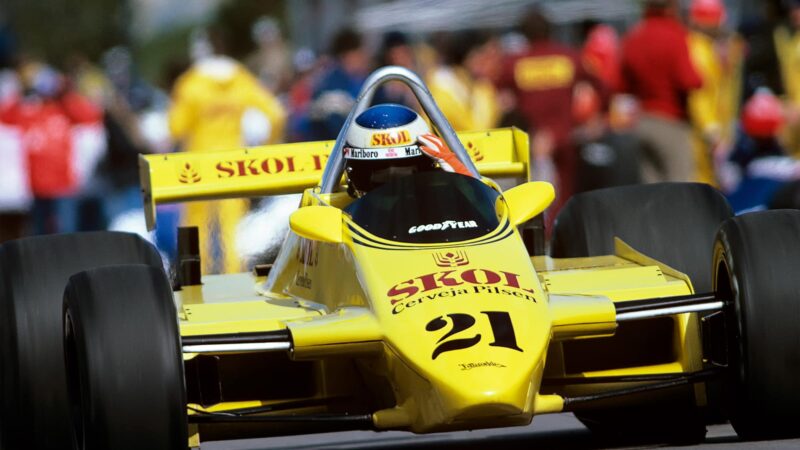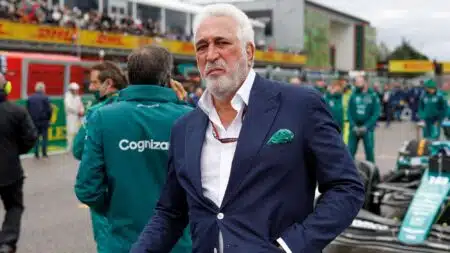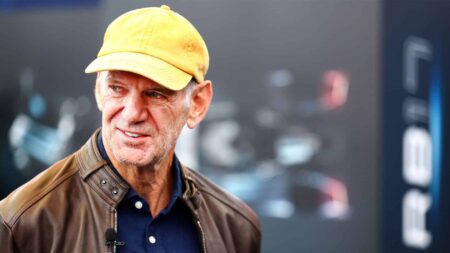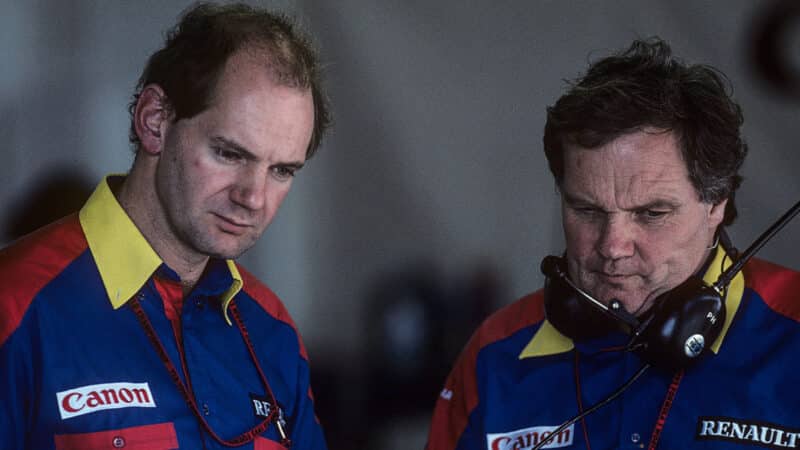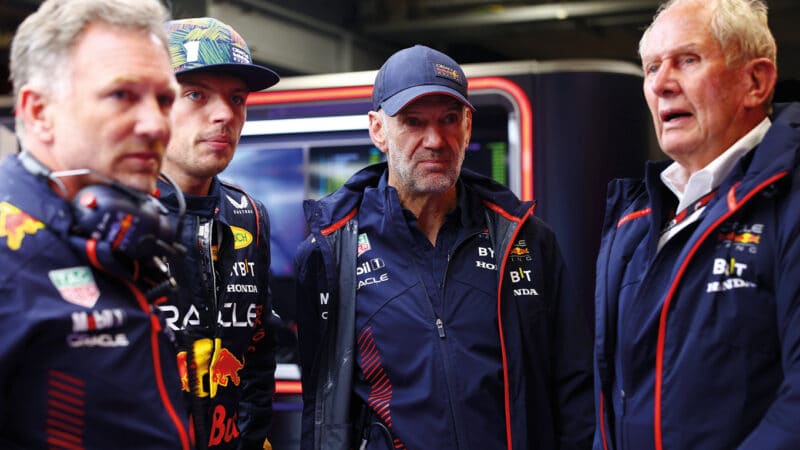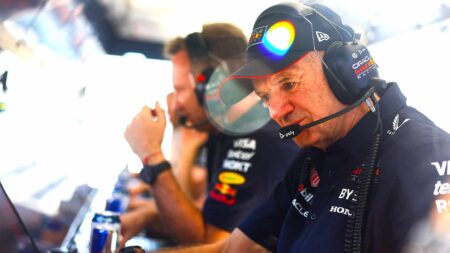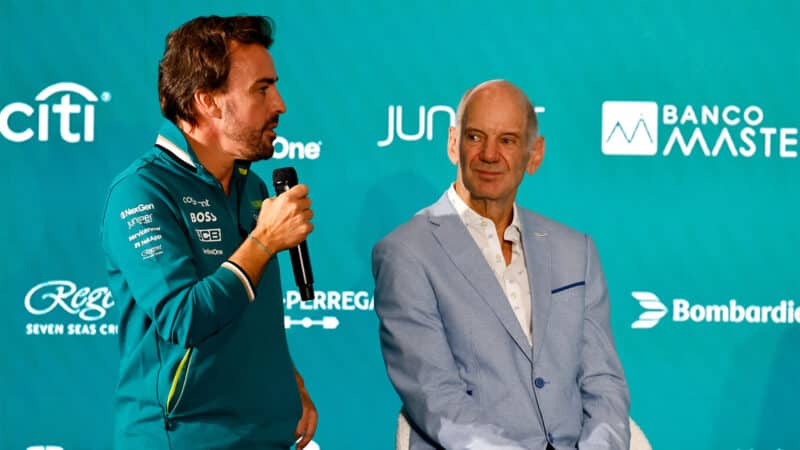From his first job in F1 onwards, it’s clear Newey’s empathy towards the relationship between driver and car has been key in manifesting his insight into how the machine works.
After leaving Fittipaldi, Newey became involved in sports cars and IndyCar through the March team and factory.
Both at Daytona and Indianapolis the young Brit had his first serious success as a designer, his cars winning the Daytona 24 Hours, Indianapolis 500 and IndyCar championship.
IndyCar legend Bobby Rahal, who Newey also race engineered, explained to Motor Sport what made their relationship a success.
“The key is how a driver and his engineer communicate, and Adrian and I were so much in tune, he knew the answer before I’d asked the question,” he said.
“I’d finish his sentences for him, he’d finish my sentences for me. Adrian is a genius, and he’s as competitive as hell, too. All he wants is to win.”
For 1988 Newey made it back to F1 with Leyton House, penning its 881 car. Almost every car Newey has produced, even if beset with reliability issues due to his desire to package things as tightly as possible, has been fast. This was true from the first F1 car he produced, that 881.
“The first time I drove it at Silverstone, I knew it was good,” driver Ivan Capelli said. “It was immediately obvious.”
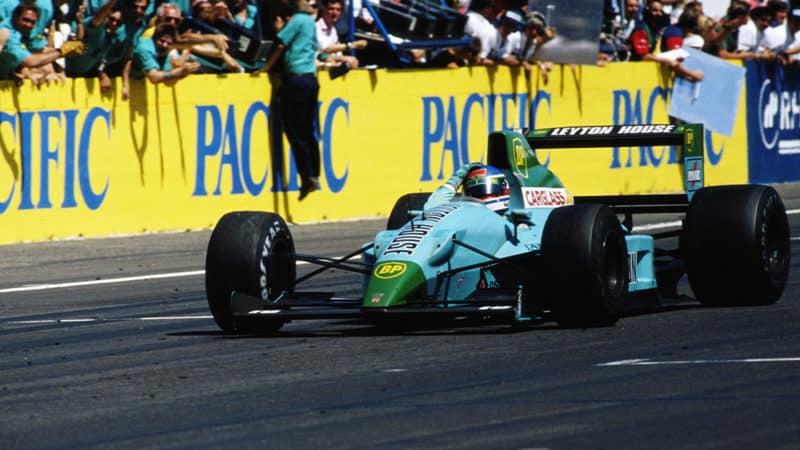
Capelli took an CG901 took an incredible second place at Paul Ricard in 1990 in Newey’s CG901
Getty Images
The Italian scored podiums with that car, and almost won the 1990 French GP in Newey’s CG901.
When Leyton House started to go downhill with money issues, Newey joined Williams, enjoying his first title successes in 1992 with Nigel Mansell and Alain Prost respectively.
The Frenchman has elaborated what makes Newey so effective.
“Adrian is listening to you, asking questions all the time,” he told F1’s Beyond the Grid podcast. “You never have an argument with Adrian. You’re talking with Adrian and he is listening, and then he does what he thinks is the best, but he never tells you what he’s going to do – or if you’re right or you’re wrong. Nothing. Just listening and talking.
“I love that, you know, that is why he’s the best. But also the ways he is working and listening, and it’s fantastic for the engineers working with him, it brings energy and synergy in terms of the brain, that capacity is fantastic.”
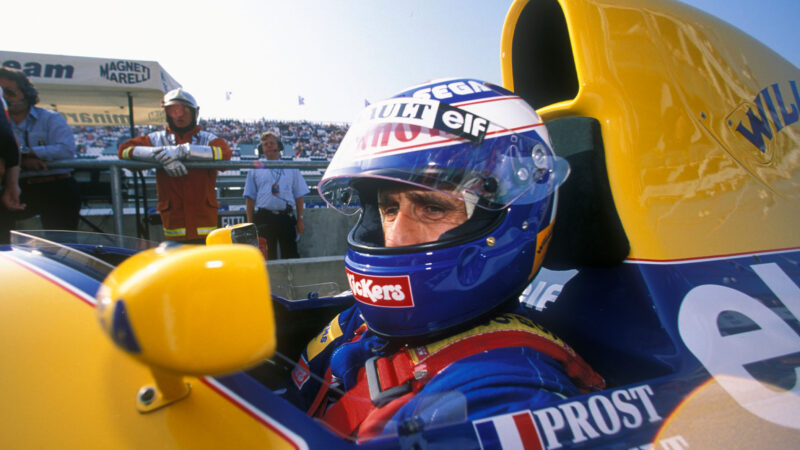
Prost worked with Newey at Williams in 1993
Grand Prix Photo
Prost’s team-mate would be Damon Hill, and he too would enjoy a world driver’s title in one of Newey’s most successful ever cars in 1996, the FW18.
Hill, always a sensitive soul who needed to be looked after by team members to reach his best, appreciated Newey’s empathetic style – as well as his ability to conceptualise all car components working together.
“Adrian Newey is an extraordinary human being,” he said. “Ultimately, what makes him unique is his personal attention; he has a careful and profound vision of what it means to be a driver driving a car.


